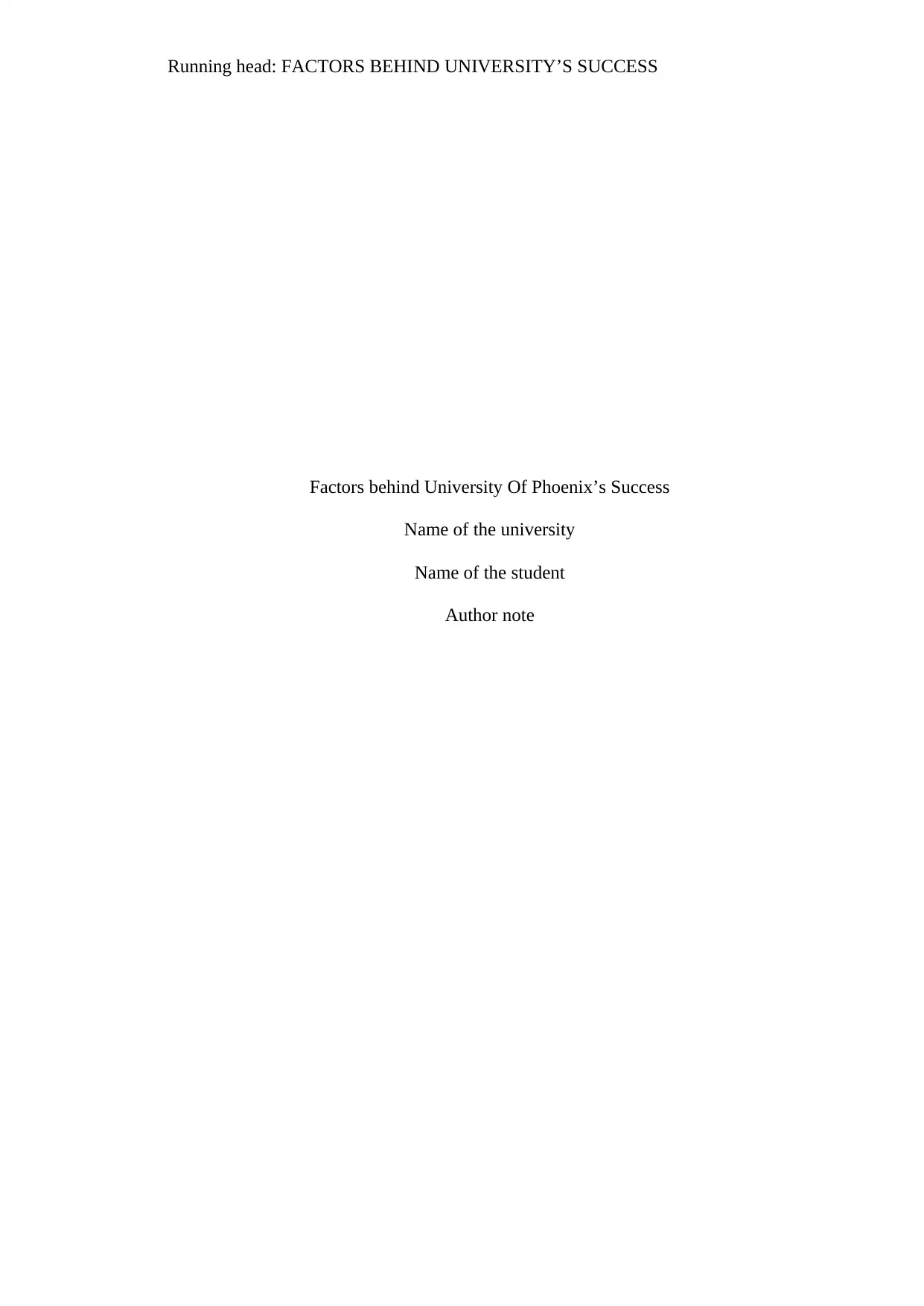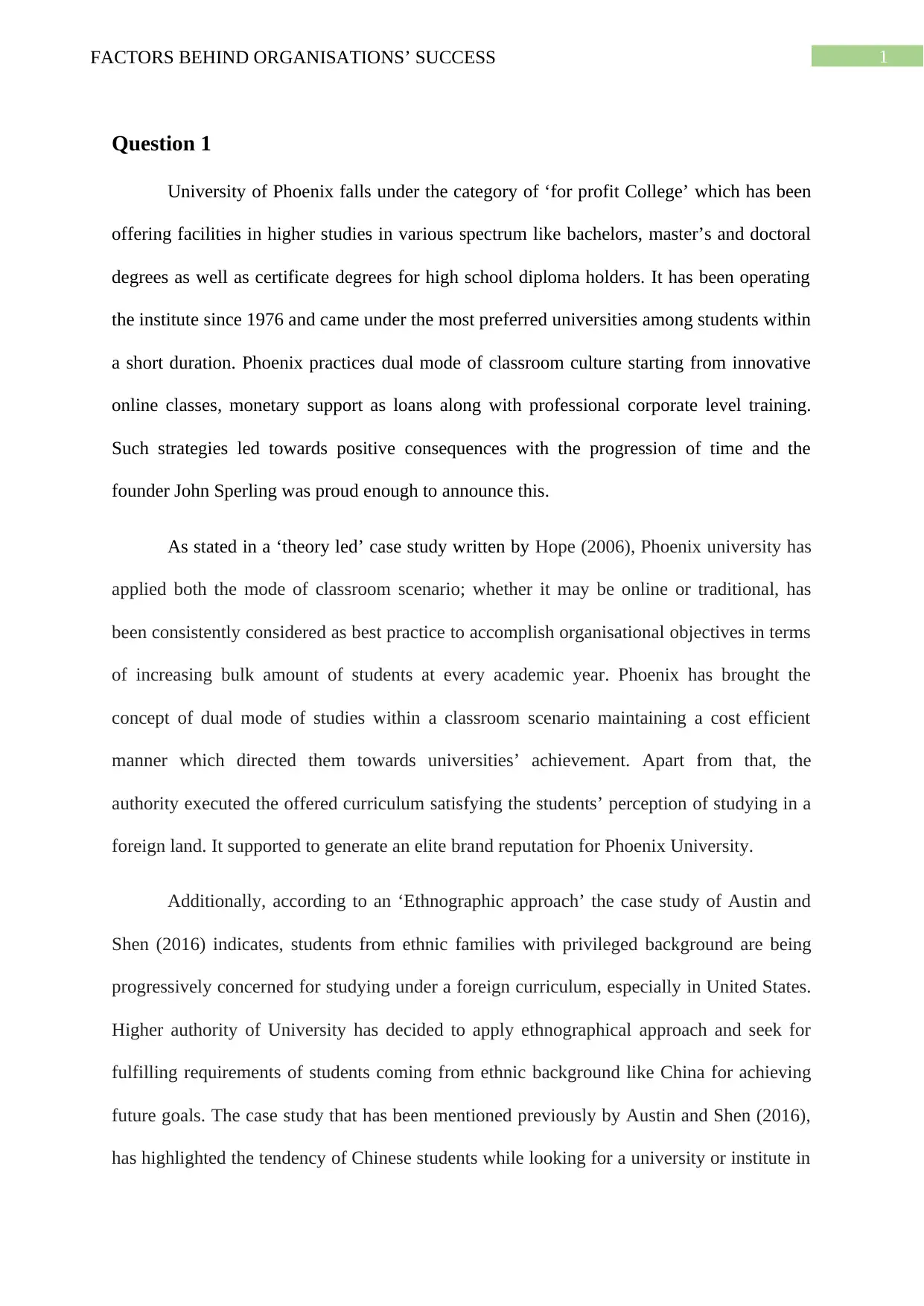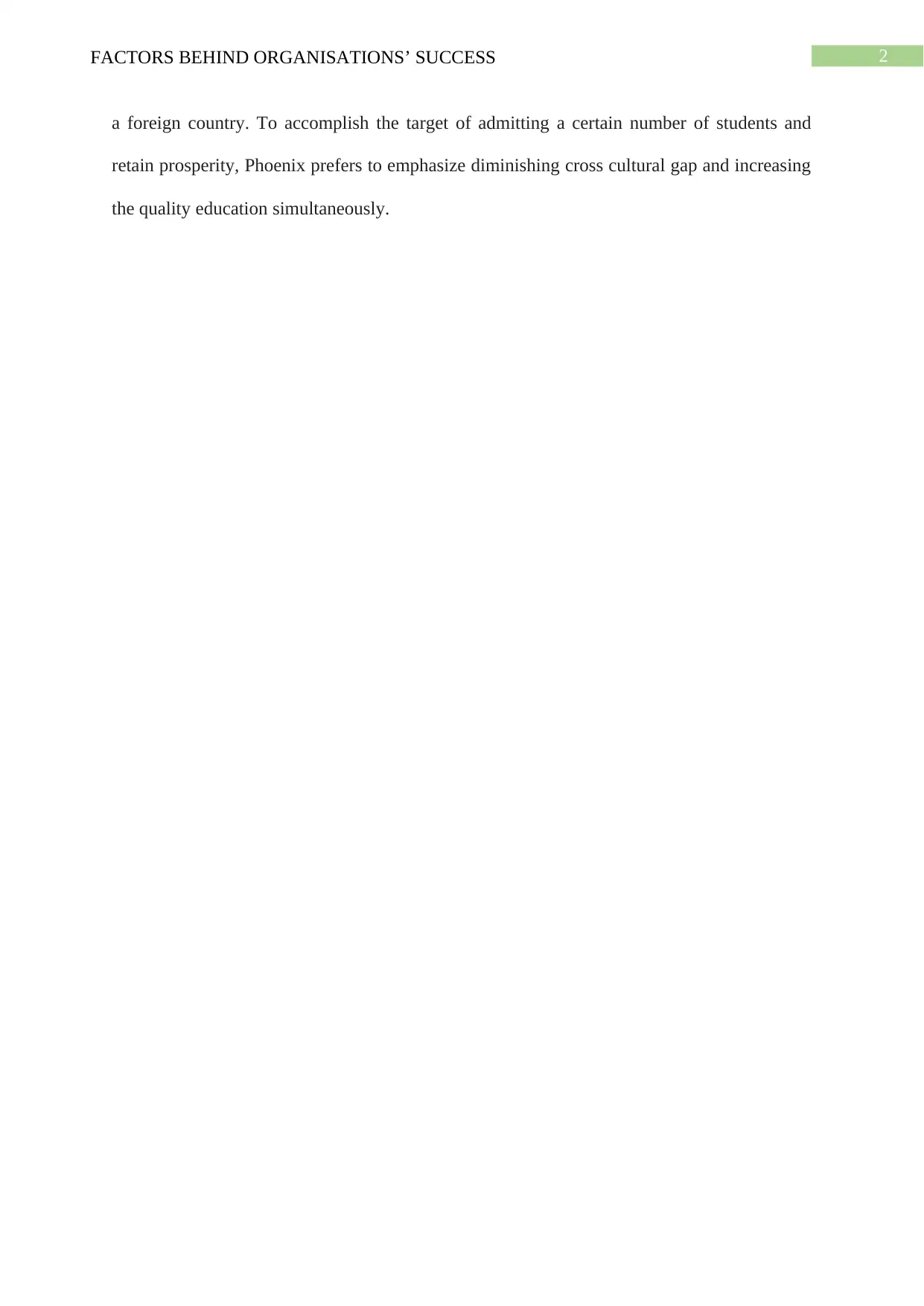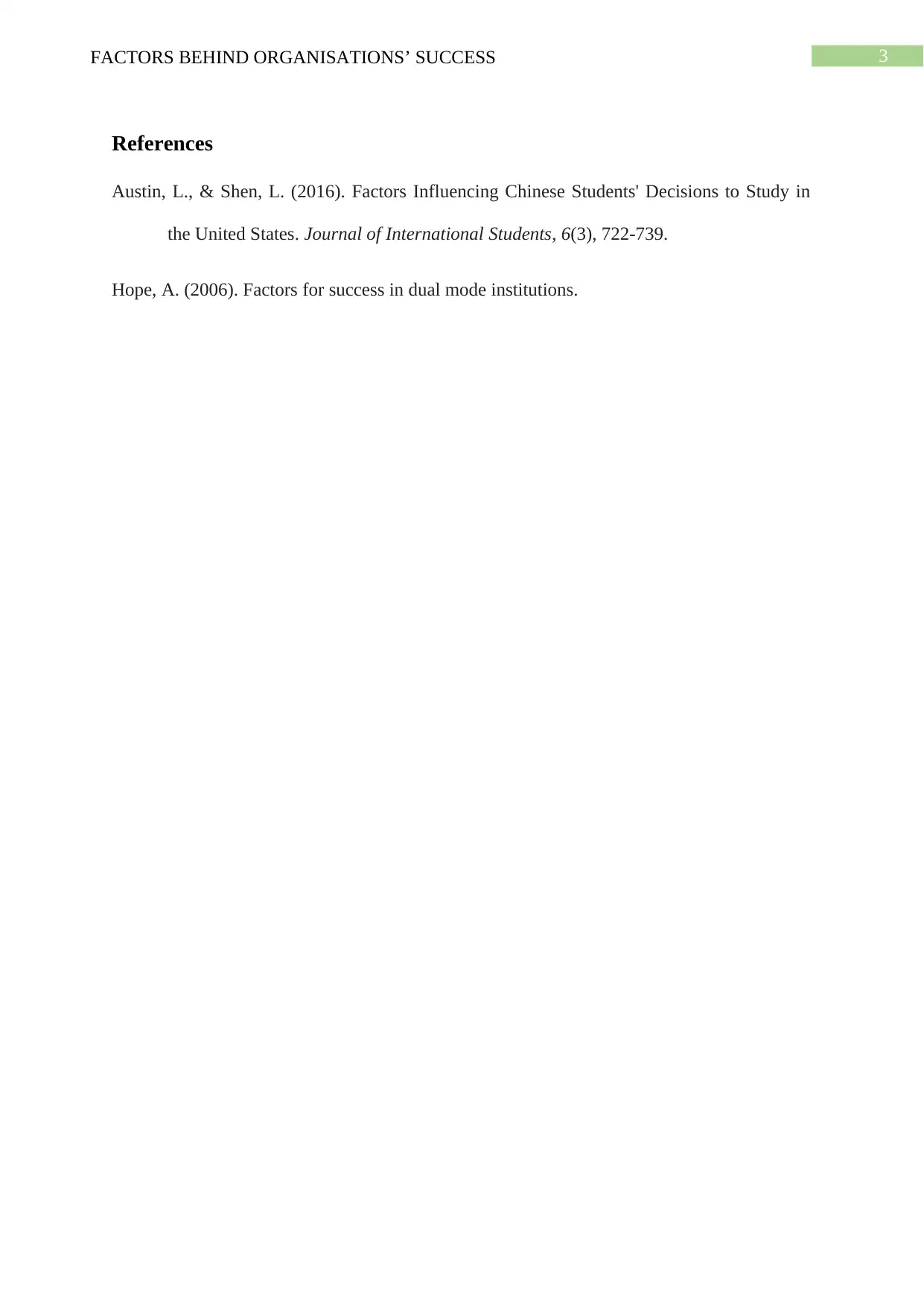Exploring the Factors Behind the Success of University of Phoenix
VerifiedAdded on 2023/04/26
|4
|472
|381
Case Study
AI Summary
This case study examines the factors contributing to the University of Phoenix's success as a for-profit college. Founded in 1976, the university quickly became a popular choice among students due to its innovative online classes, financial aid options, and corporate-level training. The university's dual-mode classroom approach, combining online and traditional learning, has been a key element in attracting a large student body. The case study also highlights the university's focus on meeting the needs of international students, particularly those from ethnic backgrounds, by bridging cross-cultural gaps and providing quality education. By employing strategies that cater to both domestic and international students, the University of Phoenix has established a strong brand reputation and achieved significant growth.
1 out of 4




![[object Object]](/_next/static/media/star-bottom.7253800d.svg)